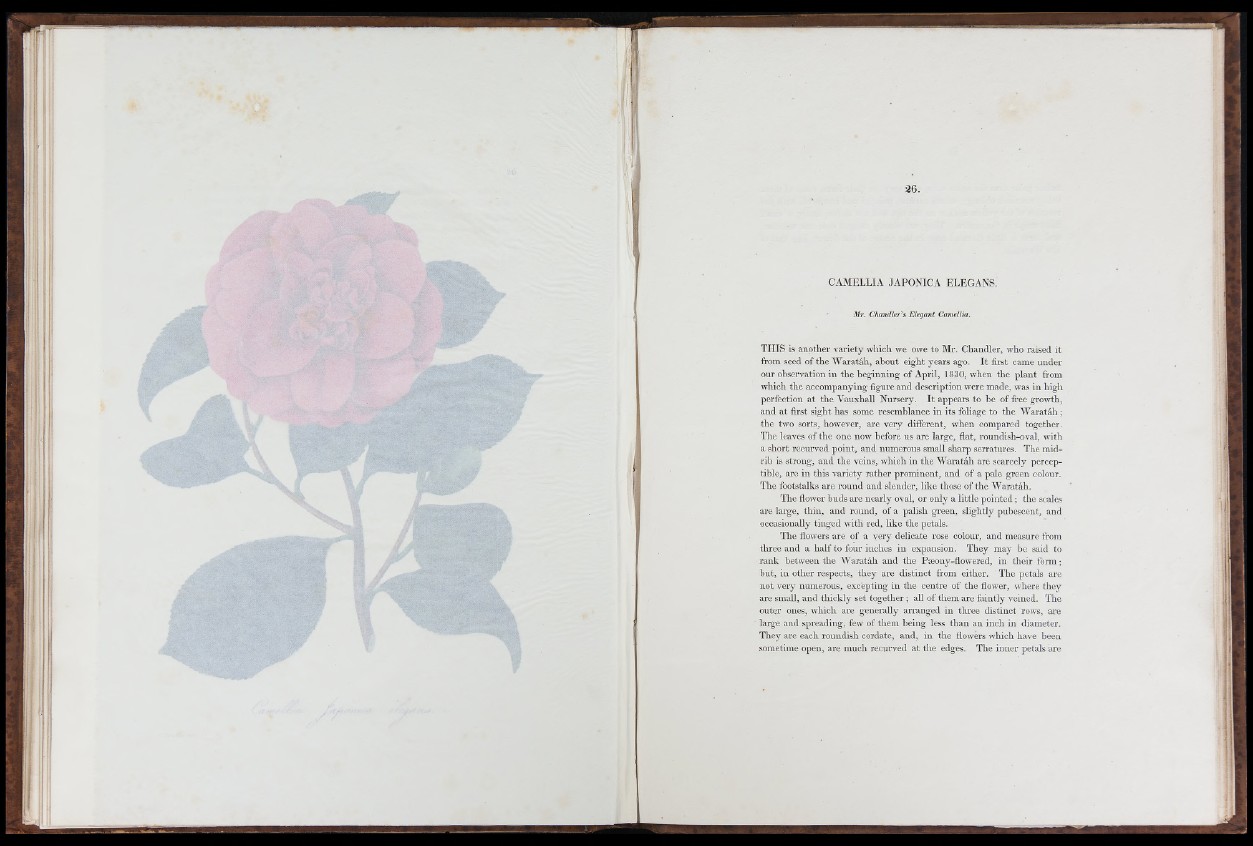
2 6 .
CAMELLIA JAPONICA ELEGANS.
M r. Chandle r’s E leg a n t Camellia.
THIS is another variety which we owe to Mr. Chandler, who raised it
from seed of the Wa ra táh, about eight years ago. I t first came under
our observation in th e beginning of A pril, 1830, when the plant from
which th e accompanying figure and description were made, was in high
perfection a t the Vauxhall Nursery. I t appears to be of free growth,
and a t first sight has some resemblance in its foliage to th e W a ra tá h ;
the two sorts, however, are very different, when compared together.
The leaves of th e one now before us are large, flat, roundish-oval, with
a short recurved point, and numerous small sharp serratures. The midrib
is strong, and the veins, which in the Wa ra táh are scarcely perceptible,
are in this variety rather prominent, and of a pale green colour.
The footstalks are round and slender, like those of the Waratáh.
The flower buds are nearly oval, or only a little pointed ; the scales
are large, thin, and round, of a palish green, slightly pubescent, and
occasionally tinged with red, like the petals.
The flowers are of a very delicate rose colour, and measure from
three and a h a lf to four inches in expansion. They may be said to
rank between the MHratáli and the Pasony-flowered, in their fo rm ;
but, in other respects, they are distinct from either. The petals are
n o t very numerous, excepting in the centre of the flower, where they
are small, and tliickly set to g e th er; all of them are faintly veined. The
outer ones, which are generally arranged in tliree distinct rows, are
large and spreading, few of them being less th an an inch in diameter.
They are each roundish cordate, and, in the flowei-s which have been
sometime open, are much recurved at the edges. The inner petals are
J